Hello! We hope you reading Sake Talk have started the New Year with delicious sake. We look forward to your continued patronage in this year. In this post, in relation to the Sake Reference Room Winter Exhibition “Sake and the Media,” we will introduce about hikifuda and flyers, following the previous article about signboards.
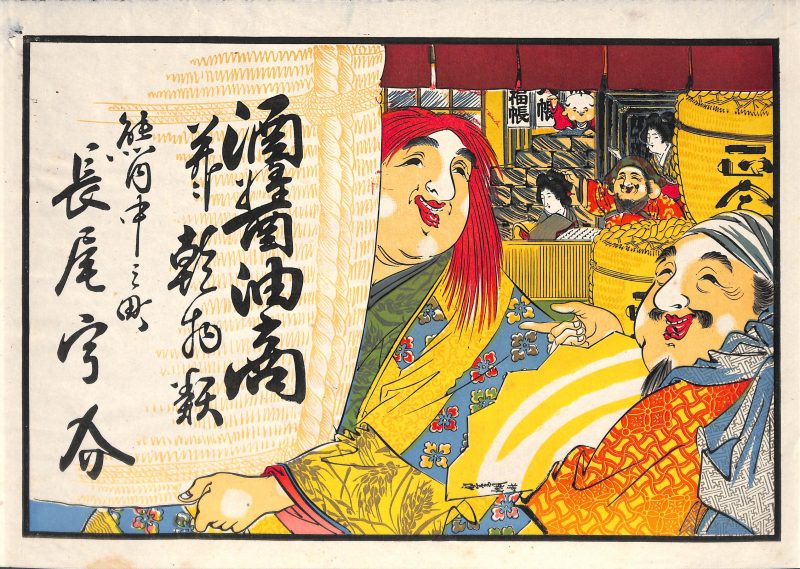
Flyers were called “hikifuda” in the Edo period (1603-1868). At first, hikifuda was mainly printed in black, but in the late Edo period, it was produced by woodblock printing with multiple colors. This image is a hikifuda in Meiji period (1868-1912). Deity Ebisu is depicted in the front-right, deity Daikoku in back-right, Fukusuke (bringer of good luck) in the center in the back and Shōjō (imaginary animal that likes to drink sake) in the front-left. This design shows a prosperous business and wish for successful sales of sake.
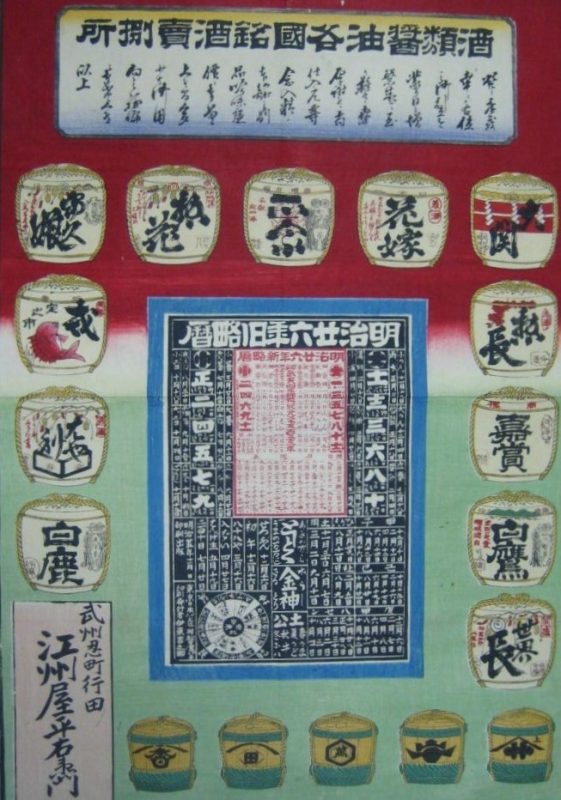
Let’s see the hikifuda which marked “Products Offered at the Store (Soy Sauce and Famous Sake).” This was made in 1892 by Gōshūya Heiemon, a sake wholesaler in Gyōda City, Saitama Prefecture. It depicts straw barrels of Hakushika and other Kamigata (the Kyoto-Osaka area) sake brands. This is interesting in the sense that it shows that Kamigata sake, which would have been consumed in Edo City in the Edo period, was sold in the Saitama Prefecture area in the mid-Meiji period. Please look at the calendar in the center. It is thought to have been distributed at the end of 1892, as it contains a new abbreviated calendar for the year 1893. In addition, the fact that the old calendar (lunisolar calendar) is prominently featured on it allows us to imagine that old calendar was still widely used 20 years after the transition to the new calendar (solar calendar) in 1873. The reason for printing the calendar in the hikifuda in this way is that it would not be thrown away by those who received them.
From the Taishō period (1912-1926) onwards, the number of woodblock-printed hikifuda decreased and the name gradually changed to “chirashi (flyers in Japanese).” The sake museum has many flyers from the early Showa period (1926-1989) onwards. For example, the flyer about “Chilled Fresh Sake of Hakushika in Summer” explains the appeal of pure sake, which is different from conventional sake. Also, Ogawa Shōten, a sake wholesaler in Ise region made flyers about “Great Sale with Hakushika Gifts,” which included the distribution of raffle tickets and the contents of the prizes. Arai Shōten, a sake wholesaler in Tokyo made flyers with special offers inviting visitors to hot springs in Izu and Hakone. They were trying to stimulate its clients and consumers to buy their products.
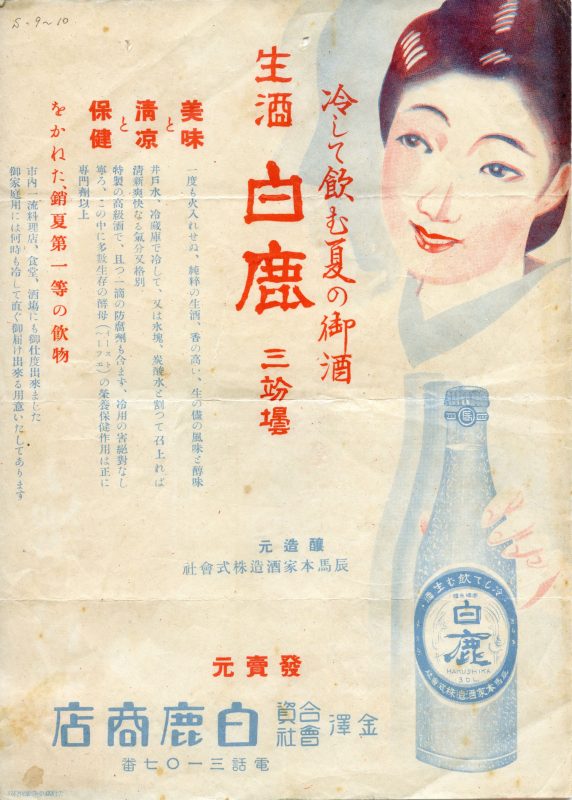
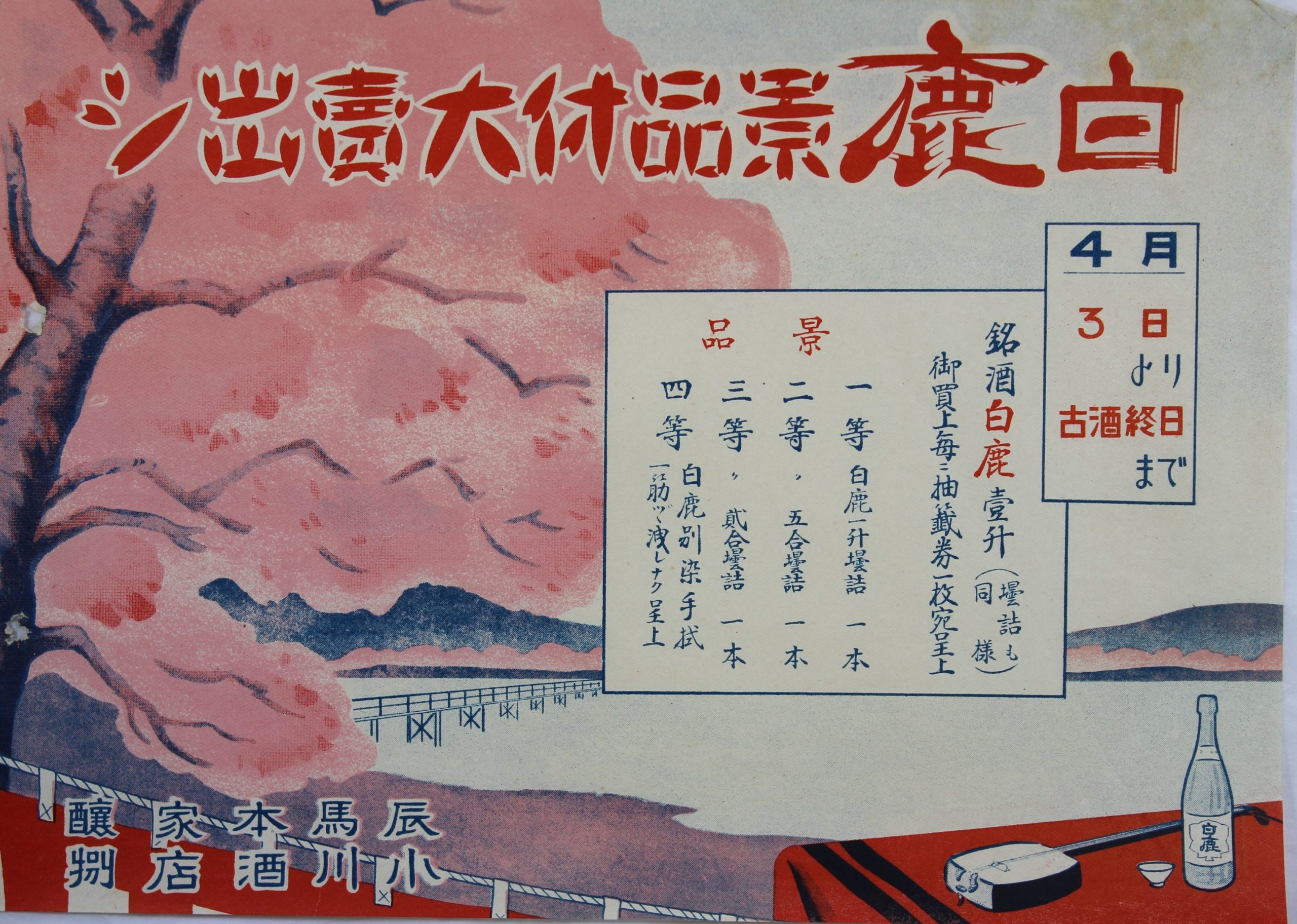
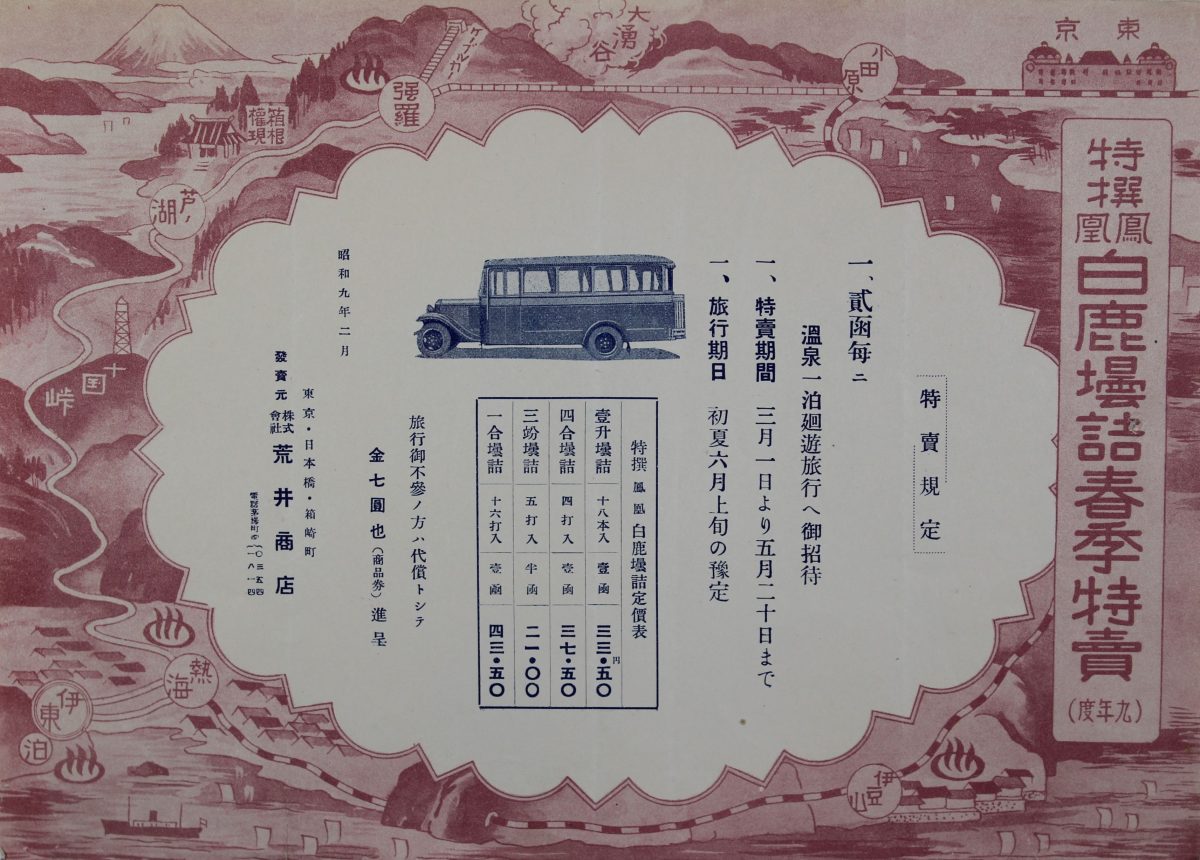
In this article, we introduced about hikifuda and flyers. The fact that they were trying to devise ways to get people to pick up the flyers by, for example, including the design with a calender, seems to have something in common with the current flyer production. The flyers of this exhibition which are distributed at various locations, have discount coupon attached to them, so please pick them up if you see them. We look forward to seeing you next article!


-scaled.jpg)
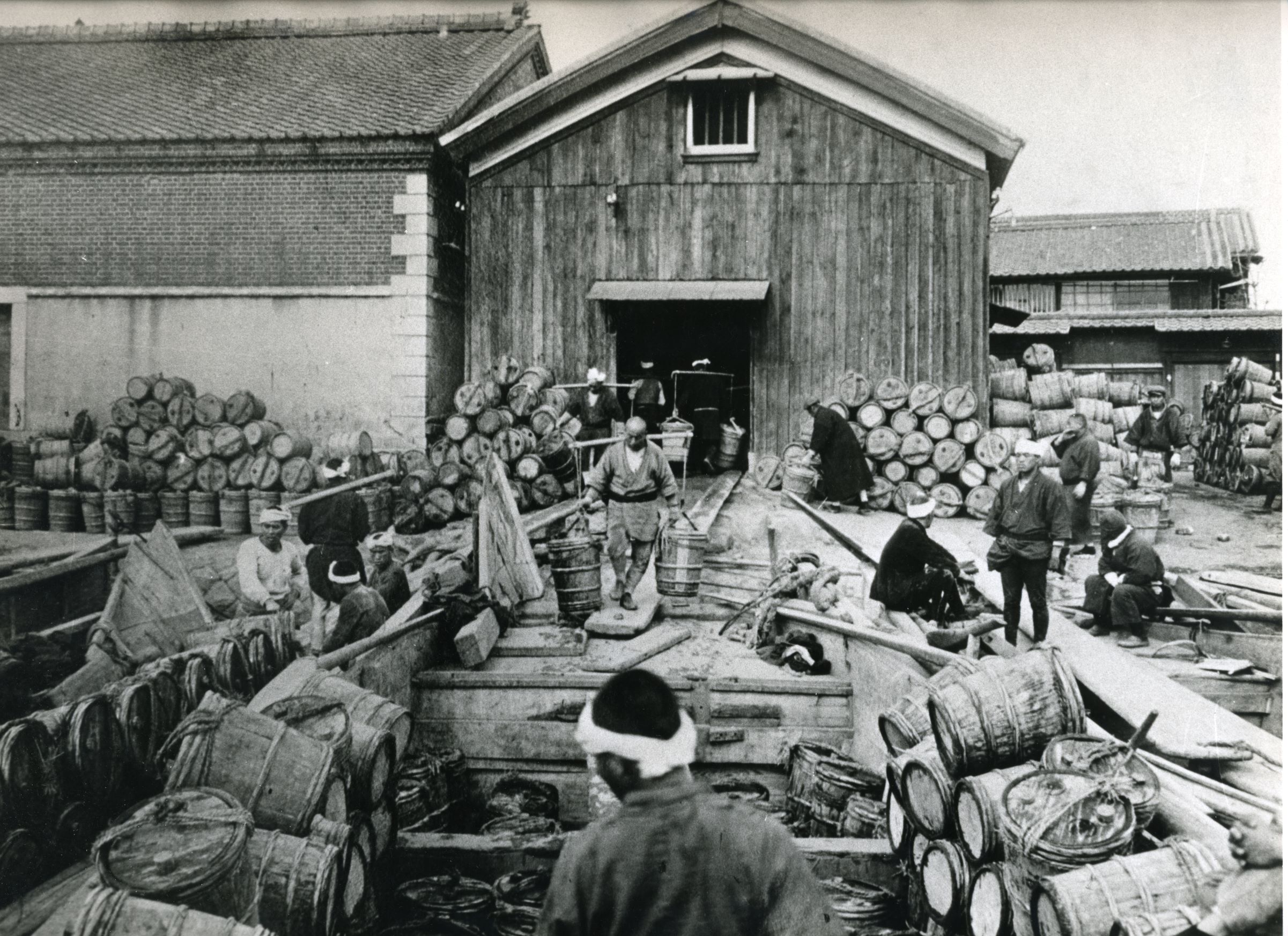
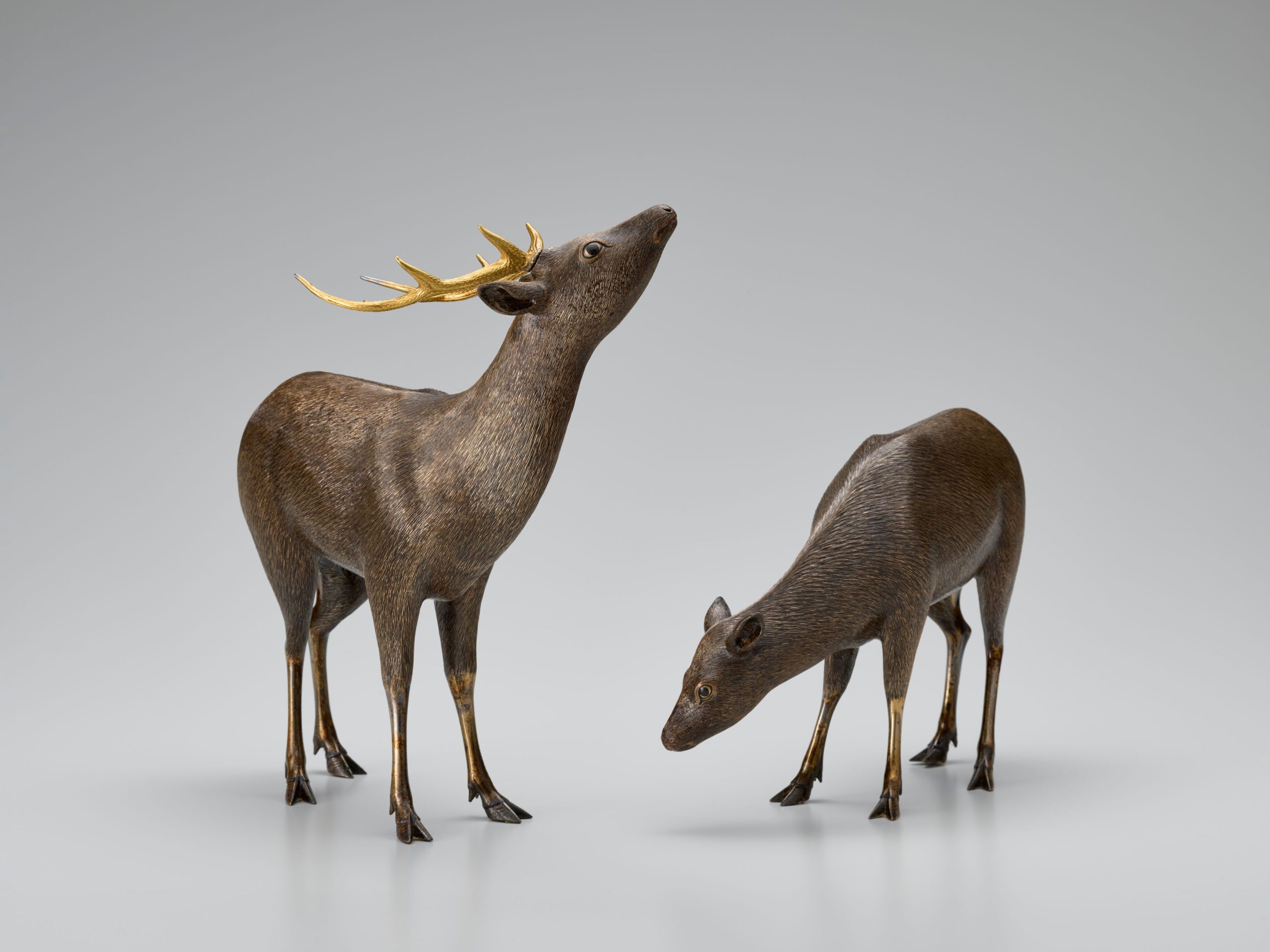
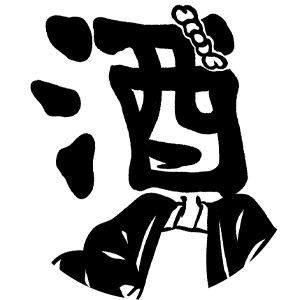
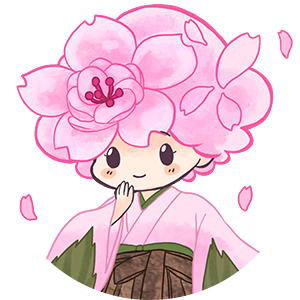
They are very gorgeous!